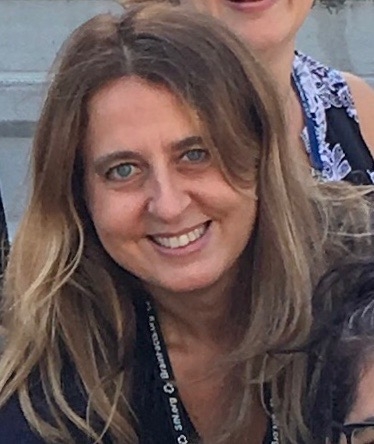silvia.diangelantonio@uniroma1.it
Silvia
Di Angelantonio

In the last years, my research interests are focusing on the impact of neuroinflammation in brain pathologies with major interest on the role played by microglia cells on neuron/microglial crosstalk with multidisciplinary approaches (electrophysiology, imaging, molecular and cellular biology, bio-fabrication). Using combined electrophysiological and biochemical studies, I contributed to the understanding of the role of the CX3CL1/CX3CR1 axis and adenosine system in microglia regulation of synaptic transmission and neuroprotection.
Concerning the role of microglia in brain immune surveillance, I am now focusing on the morphological and functional characterization of microglia cells in physiological and pathological conditions (using murine models of Alzheimer’s disease, glioma brain tumor and neuropathic pain) in brain and retina slices. In particular, using patch clamp recordings, time lapse wide field imaging and confocal analysis, I am looking at the ability of microglia cells of monitoring tissue homeostasis and rearranging processes towards an injury. In the last year, I’m working on the possibility to use the eye as a window on the brain for the early diagnosis and monitoring of Alzheimer’s Disease and other neurodegenerative diseases characterized by the presence of misfolded protein aggregates, neurodegeneration and glia activation. In this Project I’m a PI in the in the IIT – CrestOptics JointLab for Advanced Microscopy and in the Life 2020- MARBEL (Grant 2017 Regione Lazio), for the development of a new microscope for the early detection of protein aggregates in the retina of Alzheimer’s patients. The other main ongoing project concerns on the production and functional characterization of 3D-self assembled and printed biological tissues, mini- tumors and mini-organs, using human cells obtained from healthy subjects or patients with pathologies of interest. These new biological models are based on induced Pluripotent Stem Cell (iPSC), obtained from adult individuals with the goal to develop new physiologically relevant in vivo platforms for the study of physiological cell-cell interactions in physiological condition and challenged with pathological stimuli. From this research project stems the startup project HoMoLoG.
My past research in the field of neurophysiology has been focused on functional properties of ligand gated channels and on their potential impact in pathology and therapy. First, I focused on the properties and modulation of neuronal nicotinic receptors (nAChRs). Using patch clamp and confocal calcium imaging, I studied the expression and the functional properties of nAChRs in native cells (brain slices and primary cultures) and in heterologous expression systems I developed a novel class of CGRP- derived peptides with facilitating action on nAChRs (Eur. patent app. N° PCT/IT01/00477). These studies allowed to correlate basal mechanisms of excitatory cholinergic transmission with clinical aspects in amyotrophic lateral sclerosis (ALS) and Duchenne’s muscular dystrophy (DMD).
Then, I moved to the study of GABAA receptors, characterizing functional
Synaptic transmission
Neuron-glia interaction
Neuromodulation
Neurodegenerative diseases
Microglia
Organoids
Research Statement
12
properties of GABAA receptors in human temporal lobe epilepsy (TLE). I developed an innovative approach to record single neuron and glial cells in slices from surgically resected human TLE cerebral tissue. This allowed unveiling altered mechanisms of GABAergic transmission that correlates with inhibitory circuit dysfunction and clinical features. Strikingly, we found in the subiculum of TLE patients, abnormal Cl- equilibrium, producing abnormal excitatory GABA transmission. I also studied the mechanism of tumor associated epilepsy. Using perforated patch clamp and genetically encoded sensors on primary neurons, I studied glioma- neurons interactions, demonstrating that glutamate, released by glioma cells, depolarizes neuronal Cl- equilibrium causing GABA mediated hyperexcitability.
During my research career, I have been active in establishing fruitful collaborations with physicists, biomedical engineers, medical doctors, molecular and cellular physiologists and small medium enterprise (SME), to develop multidisciplinary projects, producing several peer-reviewed publications. Due to my background education in physics and expertise in basic research in neurophysiology, I have been able to play a key role in the development of multidisciplinary projects focused on biological research and technological development.

